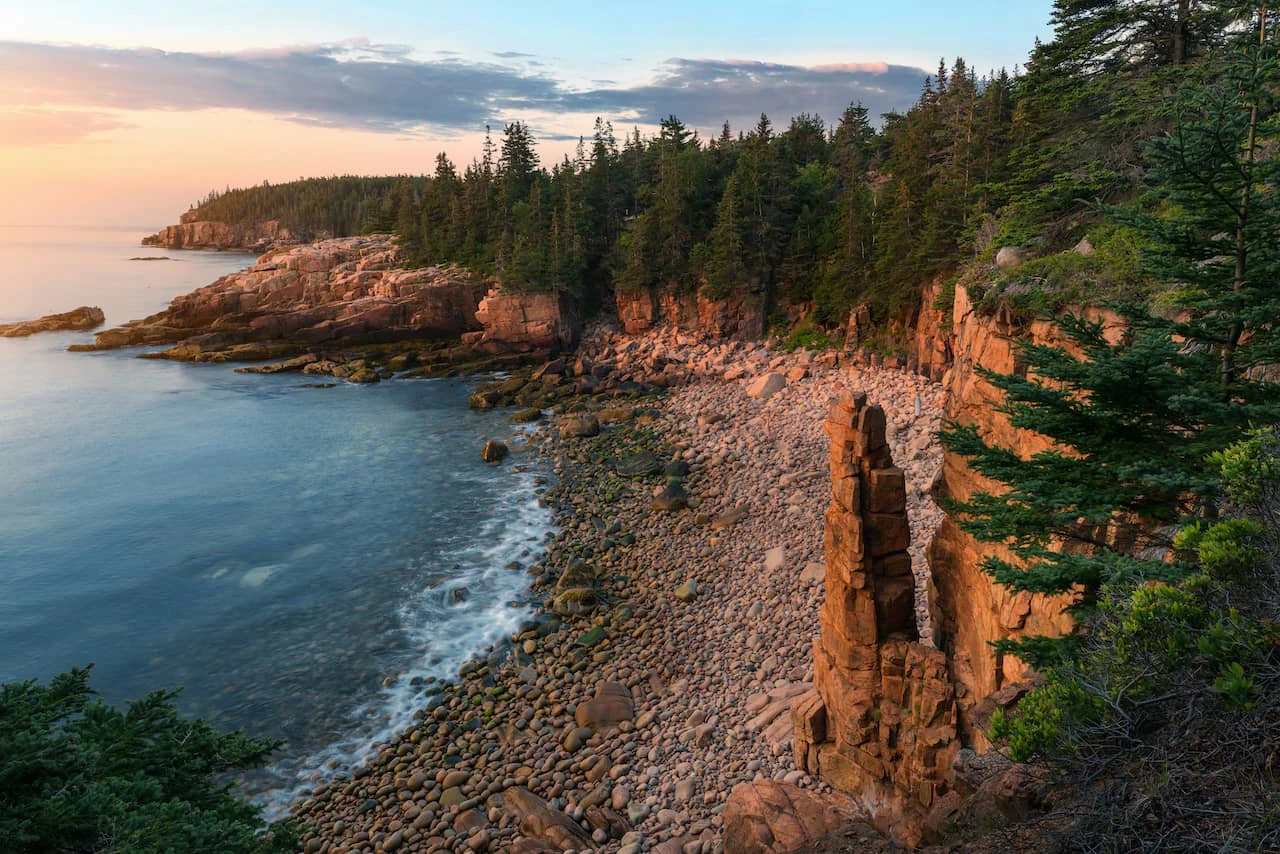Nature on the East Coast surprises those who slow down and pay attention. Towering forests, highland overlooks, swamps full of alligators, wild horses on windswept beaches—each park reveals a different layer of the land.
Some carry fog through ancient mountain hollows. Others flash with wild orchids or echo with owl calls through untouched forest. Not every adventure needs desert canyons or alpine tundra. The East holds its own secrets, shaped by ocean tides, hardwood trees, and stone paths cut long before highways.
Each national park on this list holds full federal protection and offers an escape worth your time in 2025. They give you trails, waters, cliffs, and caves. Some show color in October. Others stay warm and green deep into February.
Take your pick. From Maine to Florida, from Appalachia to the Atlantic, beauty waits.
1. Acadia National Park – Maine
You come for the cliffs. You stay for the silence after the fog clears.
Acadia hits with cold wind off the Atlantic and trails that lead straight into stone. The coast looks sharp enough to cut the sky. Water crashes into granite like it hates it. Then you hit a clearing—Jordan Pond, calm as glass. Bubble Mountains rising behind it. No noise except boots on rock and one loon calling in the distance.

What to Do There
- Beehive Trail: Iron rungs. Narrow ledges. Full exposure. You earn the view or you back down.
- Jordan Pond Loop: Flat trail. Forest one side. Water on the other. Perfect mid-day calm.
- Cadillac Mountain (Sunrise): Book a spot. Bring layers. Watch the first light hit America.
- Park Loop Road: Coastal cliffs. Trailheads. Ocean Path access. Drive slow, or stop and walk it.
What You Will See
- Waves exploding into Thunder Hole
- Bald eagles gliding over Otter Cliffs
- Moss growing out of stone in every direction
- Families whispering like they’re in church, because nature feels louder
When to Go
Mid-October. Fewer people. Foliage like fire. Cold mornings, clean air, real space to think.
2. Great Smoky Mountains National Park – North Carolina and Tennessee
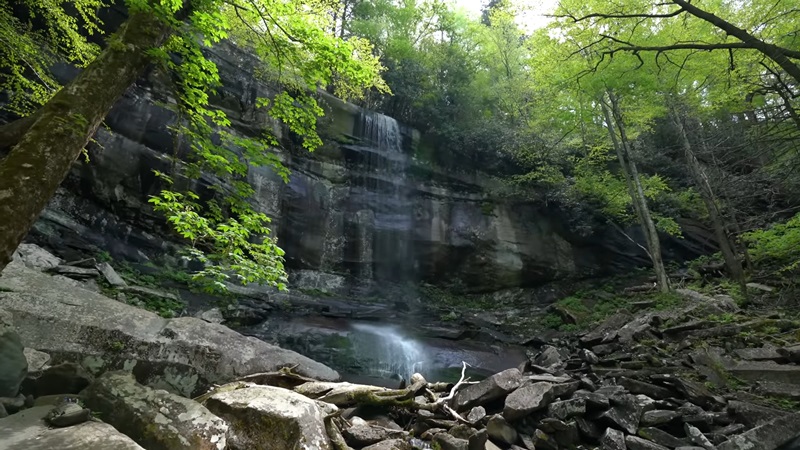
The road climbs. Fog thickens. Then the ridges stretch out forever.
The Smokies live in layers. Green on green. Fog on fog. You drive through clouds without knowing if it’s rain or just the mountain breathing. Trails cut through rhododendron tunnels. Waterfalls come without warning. Every mile feels older than the last.
Highlights
- Cades Cove Loop: Eleven miles of silence, deer, black bears, and 1800s cabins with hand-cut beams
- Clingmans Dome: Half-mile paved climb. Brutal if you’re not ready. Worth it at the top
- Alum Cave Trail: Starts soft, turns steep. Ends in wind and view
- Newfound Gap Road: Don’t rush it. Pull-offs hide the best views in the park
You Will Enjoy in Amazing Sights
- Smoke rolling over treetops like breath in cold air
- Wet rock shining under waterfalls that don’t even have names
- Old churches and fences deep in the forest
- Elk stepping out of the fog like ghosts with antlers
Best Time to Visit
April or early November. You get either wildflowers or fire-colored hills. No heat. Fewer crowds.
3. Shenandoah National Park – Virginia
Skyline Drive is not a 105-mile argument against the interstate.
Shenandoah hangs high over Virginia. You drive along a spine of mountains that never fully reveal what’s next. Trails drop fast into shadow, then rise into sunlight again. Deer stand at trailheads like they’re waiting for someone. Hawks ride the thermals above tree lines that stretch into blue haze.
Main Attractions
- Old Rag Mountain: No easy route. Rock scrambles. No shortcuts. Real payoff at the top
- Dark Hollow Falls Trail: Short, steep, loud with water. Mist hits your face before you see the drop
- Skyline Drive Overlooks: Stop often. Don’t just glance. Step out and stand there for a minute
- Bearfence Loop: Fast hike. All view. Sunsets hit different here
What You Will See
- Black bears moving silent through brush
- Wildflowers scattered along cliff edges
- Clouds crawling across the road like smoke
- Layers of blue ridges stacked behind each other like waves
When to Go
Late October. Best leaf color. Cold enough to feel it in your chest. The forest hums without insects or heat.
4. Everglades National Park – Florida
Nothing in the Everglades moves fast. And yet everything is always shifting. Water flows through grass like wind. Trees rise out of the muck like they grew there before time started. Birds stare back at you like they’ve seen worse.

If You Go, Know This
You are not the top of the food chain here. Step quietly. Listen before you walk. Pay attention.
| Area | What Makes It Wild |
|---|---|
| Anhinga Trail | Gators, birds, fish, all in view—no glass between you and the teeth |
| Flamingo | Base for backcountry paddling—expect silence, salt, and heat |
| Pa-hay-okee Overlook | View the slow river of grass—no sounds, no crowds |
| Gumbo Limbo Trail | Tropical hardwoods, hidden snakes, deep green everywhere |
Standout Details
- Lightning storms build fast, crack hard, then vanish
- Mosquitoes arrive like a rumor you didn’t believe
- Airboats tear across water flats—but go slow and silent instead
- Park rangers here carry gator stories, not just maps
Go in: January through March. Dry season. Fewer bugs. Better animal activity. Water low, tracks visible.
5. Congaree National Park – South Carolina
The land holds moisture in its bones. Even after days without rain, the soil stays soft and the air feels heavy. Trees rise without apology, their roots pushing upward as if the ground itself tried to drown them.
You move along a narrow boardwalk that bends underfoot, surrounded by trees so tall they shut out the sky, with trunks so wide they carry age in every groove.
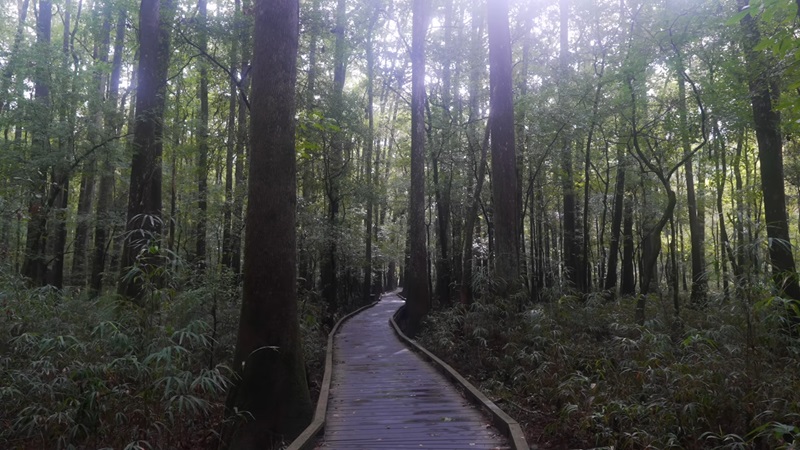
The Kind of Place that Stays with You Whether You Want It or Not
You smell wet bark before you see anything. You hear distant drips and the sharp call of something hidden. Cypress knees rise in clusters near the edge of the path.
The water reflects shapes that are not always yours. Sometimes the trail turns into water. Sometimes the forest turns into stillness. There is no clear beginning or end. There is only what is in front of you, and then what is no longer visible.
Birds do not fly in flocks. They appear one at a time, and they watch you longer than they should. An owl sits on a branch during daylight and does not move when you stop. You think about saying something, but there is no reason to speak.
Everything Waits for The Right Evening
When May arrives, the forest takes on a different shape. After sunset, the fireflies rise—not in bursts, but in waves that move with rhythm and precision.
Thousands light the swamp in perfect intervals. There is no chaos in their pattern. Every flash lands exactly where it belongs. For a few minutes, the trees stop towering and the darkness becomes a stage. You do not cheer. You do not move. You simply stay until it ends.
The Window Closes Fast
Visit in May. That short stretch of nights will not wait for anyone. When the lights go dark, the forest returns to what it always was—wet, quiet, alive, and entirely indifferent to anything you were hoping to find.
6. Dry Tortugas National Park – Florida
You can’t drive there. You take a ferry, or a seaplane if you’re lucky. And when you get there—70 miles past Key West—Fort Jefferson sits on blue water like it floated out of a dream and anchored in the Gulf.
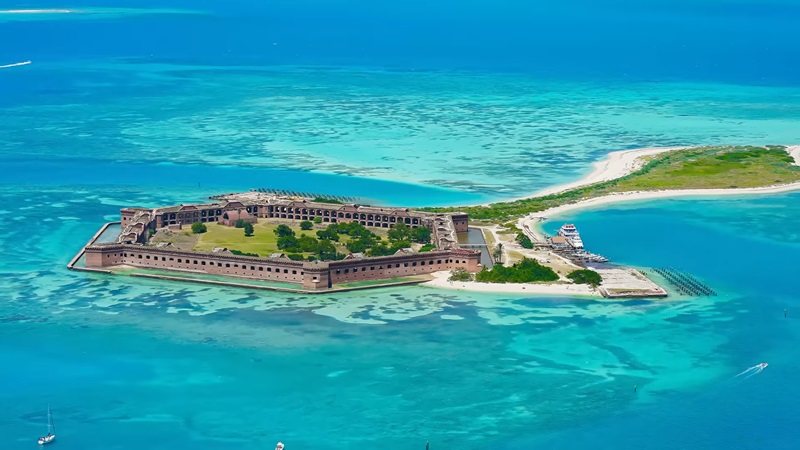
Here’s What to Expect
- The fort is massive. Brick walls, cannon mounts, echoing halls. But the real shock is the silence around it
- Coral reefs begin just off the beach. No boat needed. You walk in and snorkel over fish, old anchors, and clear sand
- It’s quiet in a way few places are. Not because no one’s there—but because the ocean absorbs everything
- Seabirds wheel in wide circles. You sit still enough, they ignore you completely
Why You’ll Remember It
| Thing | Reason You Can’t Forget It |
|---|---|
| The water | Turquoise so sharp it looks fake until your eyes adjust |
| The isolation | No cell service. No stores. Just wind and waves |
| The fort | A Civil War relic surrounded by reef |
| The stars | If you camp, the sky turns violent with light—stars thick enough to feel close |
- Best time to go: February to April. Clear skies. Calm water. Coral visible. Air dry and still warm.
7. Cuyahoga Valley National Park – Ohio
Cuyahoga does not open with a view. It opens with quiet. You turn off the main road and step into soft light, slow trails, and thick tree cover that blocks out the city. The park moves differently—steady, grounded, and old enough to ignore modern noise.
Trails That Pull You In
Brandywine Falls runs without drama. It cuts through stone, not for show, but because it always has. You reach it through leaves that crunch underfoot, and when you arrive, the sound is steady and low. Not a roar. Just presence.
Beaver Marsh feels untouched. Turtles warm themselves on downed logs. Herons watch without blinking. The surface of the water holds still unless something decides to move. The path curves without warning and you realize you haven’t spoken in minutes.
Moments You Catch If You Pay Attention
– The Cuyahoga Valley Scenic Railroad rolling slow through tunnels of gold
– The scent of wet bark after early autumn rain
– A fox slipping between tall grasses just past sunrise
– A canal lock rusted shut but still holding the shape of another time
8. Assateague Island National Seashore – Maryland and Virginia
Assateague is not calm. It shifts every hour. Dunes slide. Salt air claws at your gear. The ocean sounds like it wants to erase the whole place.
And through it all, the wild horses walk like kings. You do not pet them. You do not name them. You watch them disappear into fog, and you know that’s enough.
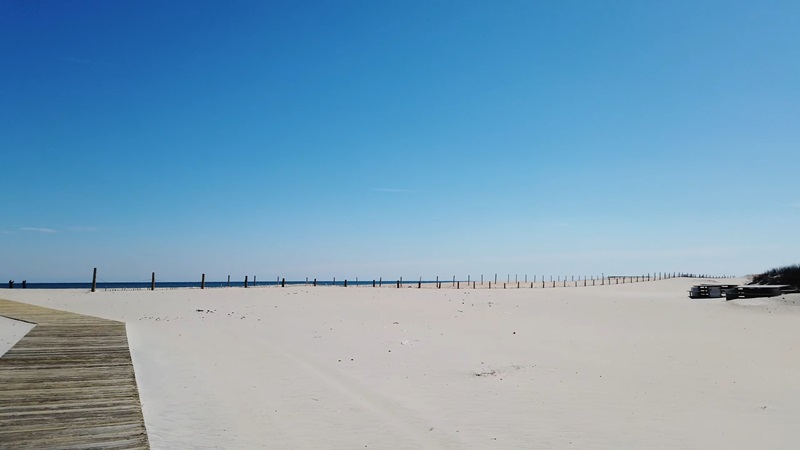
What You Experience
– Mornings where hoofprints circle your tent
– Evenings where driftwood catches firelight perfectly
– Nights with no lights except for stars cutting through the Atlantic sky
– Days where wind carves new shapes into the same beach you just crossed
Where It Pulls You
| Place | What Happens There |
|---|---|
| Bayside Campgrounds | Quiet nights, shallow water, fire in the wind |
| Life of the Dunes Trail | You learn how sand moves like breath |
| Oceanside | Wide open surf and sky, no buildings in sight |
| Woodland Trail | Chance to meet a horse with no name, blocking the path |
9. Cape Cod National Seashore – Massachusetts
Cape Cod clears out in the fall. The ice cream shops close. The roads go quiet. That’s when the national seashore wakes up. The dunes shift into shadow.
The wind carries seabird calls without interruption. The lighthouses blink at no one in particular. You walk farther than you meant to. The ocean follows at a distance, cold and exact.
Best Activities
– Hike the Atlantic White Cedar Swamp Trail and hear the crunch underfoot change every twenty steps
– Climb to Nauset Light and watch waves strike the cliff with military precision
– Sit still at Race Point and watch seals drift like shadows across the shallows
– Lose hours tracing tidal patterns in wet sand that looks painted by hand
What Locals Don’t Tell You
| Time | What Changes |
|---|---|
| Before 10 AM | You own the beach—only footprints are yours |
| After 4 PM | Sky turns metallic, clouds roll flat, gulls vanish |
| First week of October | Light turns bronze and the sea starts speaking again |
When You Should Be There
October through early November. The wind is sharper, the ocean louder, and every trail empties out except for you.
10. New River Gorge National Park – West Virginia
You do not ease into New River Gorge. It shows up without warning. One curve in the road and the land is gone beneath you. What’s left is space. Trees hanging on to cliff walls. Water moving like it has a deadline. Bridges standing tall enough to scare birds.

How You Spend Time Here
Hike Endless Wall Trail and stop at Diamond Point. It’s not a view. It’s a gut punch. You feel your ribs tighten. You see hawks cutting lines through wind. Then the trees move again.
Climb at Bridge Buttress if your hands know stone. If they don’t, walk the rim and let the air work on you. Paddle below if you have no fear of water flipping you over.
Encounters You Remember
– Mist sitting low in the gorge while the sun burns through it
– Graffiti scratched into trail signs by people who should’ve stayed longer
– Bridge Day. One moment of madness where humans jump and fly and fall with pride
Don’t Go Mid-Summer
Come in early April or the last week of October. The air stays cool. The gorge stays sharp. The trails belong to trees, not buses.
11. Mammoth Cave National Park – Kentucky
You walk underground, and the temperature drops before your first step. The caves do not welcome. They absorb. Your words echo without rhythm. Your flashlight feels weak. The darkness does not push—it swallows.
Mammoth Cave stretches farther than any known cave system on Earth. That’s not trivia. That’s reality when you’re two miles in, and the surface feels imaginary.
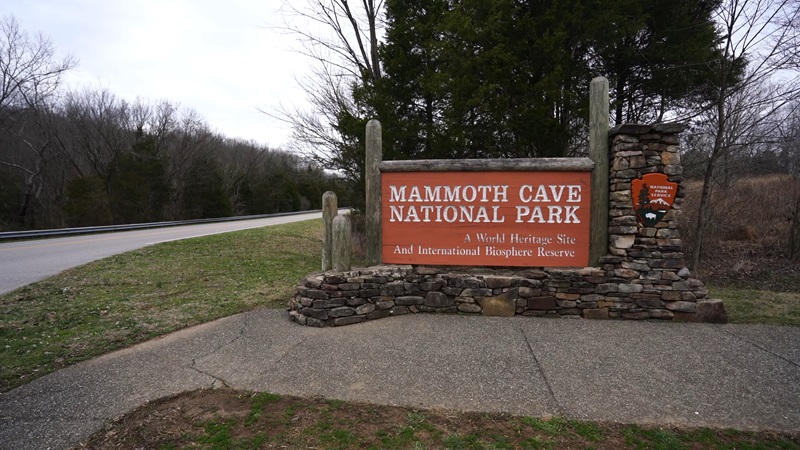
The Routes That Matter
– Go with a guide or you’ll be walking inside a puzzle you can’t solve
– Take the Historic Tour to find out where torches once failed
– Squeeze through the passage called Fat Man’s Misery and feel how stone decides your movement
– Stand under Rotunda and imagine churches where no light enters
Surface Reminders
– River Styx Spring Trail runs quiet above the cave system
– Green River Bluff glows orange when the sun drops below the tree line
– The air above feels thin after time spent under
12. Biscayne National Park – Florida
You think it’s about the surface. It never is.
Biscayne begins where the road ends. There are no scenic loops or mountain trails. You need a boat, a paddle, or fins. What waits out there is not landscape—it’s water, reef, mangrove, and silence deeper than the sea itself. The moment you leave shore, the mainland disappears. What’s left is light on water and a pull that does not let go.
Details That Matter More Than Photos
– Coral that glows pale gold in morning water
– Pelicans diving without sound, landing with a slap
– Mangroves rooted in salt, sheltering more life than any beach ever will
– Snorkelers drifting above schools that shift like a single body
When Biscayne Gives You the Best of It
Visit in March or early April. Storms stay away. Visibility clears. The wind drops. You’ll find the reef sharp, the water calm, and the silence louder than anything on land.
Conclusion
Each national park on the East Coast carries its own weight. Some whisper through fog and fireflies. Others press wind against your chest or silence against your breath. None of them exist to entertain you. They exist exactly as they are—wet, wide, old, wild, indifferent, and beautiful.
You crossed rivers, mountains, swamps, and open sea. You stood inside caves that erase time. You watched wild horses vanish into mist. You saw the sky burn against canyon walls. These places do not chase visitors. They wait. And now, in 2025, they are still waiting.

